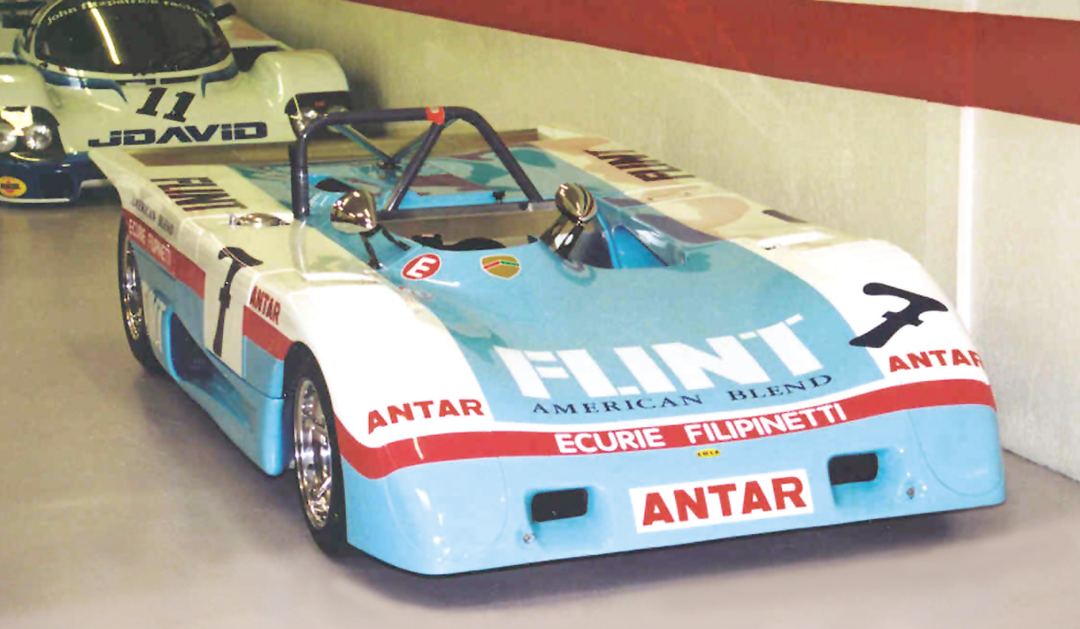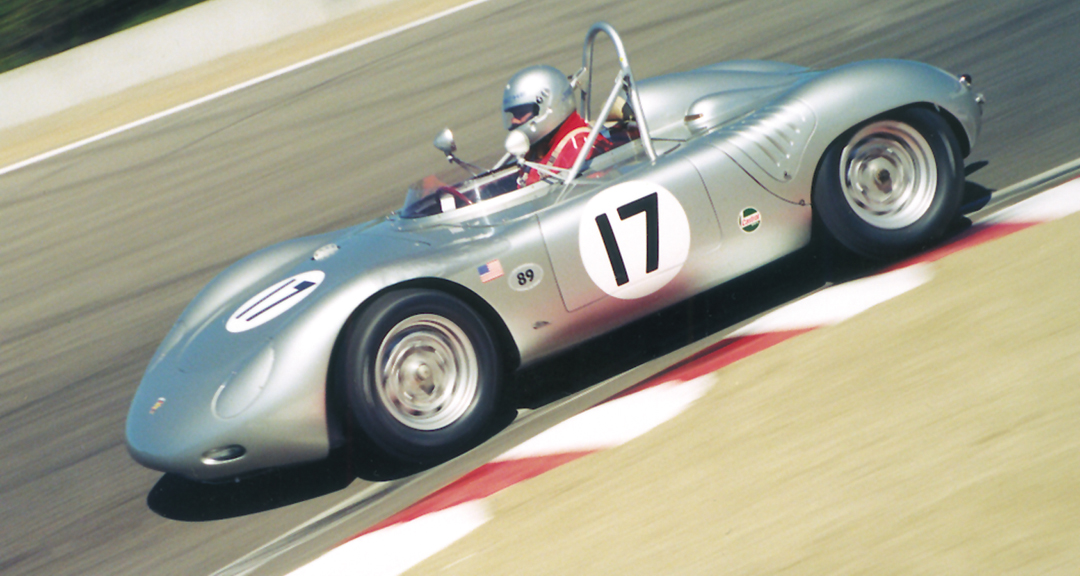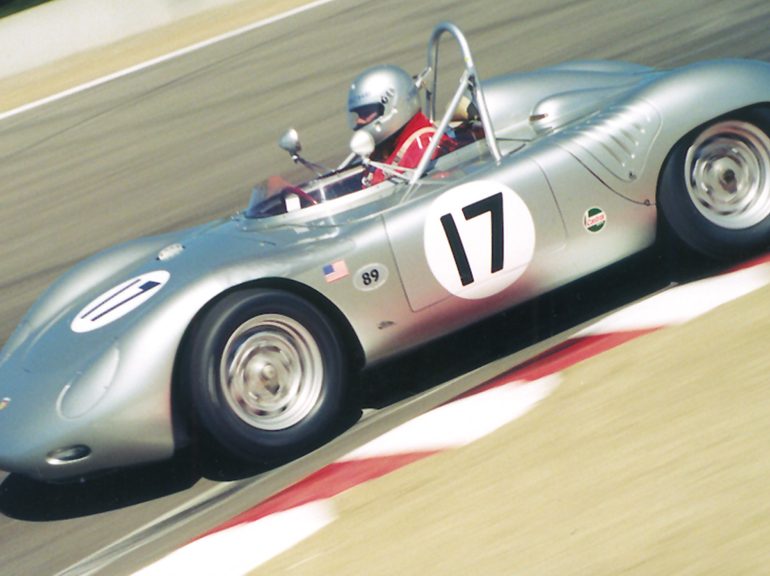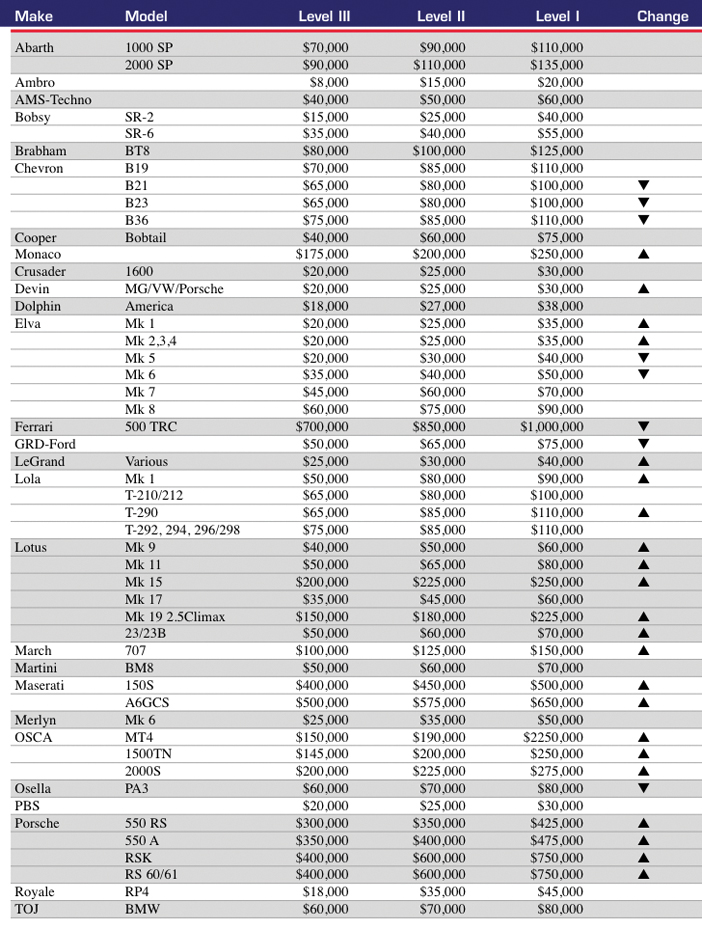Two liter sports racing cars have always had a place to compete within the ever changing regulations of international motorsports; the World Sports Car Championship from 1953-1961, the Speedworld Challenge from 1962-1963, the International Championship of Makes from 1964-1971 and the World Championship of Makes from 1972-1981. There was even a European Championships of Makes for cars up to two liters from 1970-1975. This allowed manufacturers to showcase their design and engineering excellence by producing a limited number of purpose-built racing cars to compete at the world’s greatest racing venues. This resulted in an era of motorsports that may never happen again.
Today, these historic cars are highly sought after by collectors not just for the admiration of their technology but to also participate in reenactments of these famous racing events.
Lola T290

Porsche RSK

The RSK had class victories – and often outright victories – over much larger competition at the Nürburgring, Monza, Spa, Reims, Avus, Zeltweg and the Sebring 12-Hours. In 1958, RSK’s placed 3rd and 4th overall at the 24-Hours of Le Mans and in 1959 won the Targa Florio outright. The RSK was also raced in “center-steer” form as a Formula 2 car, winning at Reims and placing 6th at the German Grand Prix against F1 cars. Only 34 RSK’s were built. A few of these special factory RSK’s, with unique racing history, have recently traded hands in excess of the current Market Guide values due to their historical significance.
Criteria Used For Assessing Valuations for this Guide:
- Degree of Originality
- Overall Condition, Restoration
- Technology, Design, Coachbuilder
- Production Numbers/Rarity
- Competition History
- Ownership History, Documentation
- Modern Event Eligibility
Regional Variances
The prices stated in this guide are based on U.S. values. The values of historic racing cars can vary as much as 25%-35% in other countries, depending on local market appeal, currency rates, import duties, and VAT. Most of the time, we are able to document known sales or closed escrows, as they say in real estate. When this is not possible, a logical estimate of the car’s value is given, based on its sales history and relationship to cars of its type.
The prices stated in this guide are based on U.S. values. The values of historic racing cars can vary as much as 25%-35% in other countries, depending on local market appeal, currency rates, import duties, and VAT.
LEVEL |
VALUATION CATEGORIES |
|---|---|
I |
The best combination of all criteria. |
II |
Satisfies mid-range of criteria. |
III |
In need of restoration. Meets only a few points of criteria |





